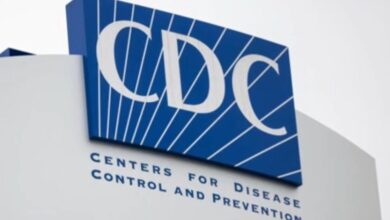Early-onset cancer rates rise for multiple types among Americans under 50
The incidence of various types of cancer among individuals under the age of 50 in the United States is on the rise, according to a recent study published in Cancer Discovery. This increase in early-onset cancers, which include breast, colorectal, endometrial, pancreatic, and kidney cancers, has significant implications for prevention and screening efforts.
Lead author Meredith Shiels, Ph.D., MHS, and her team analyzed cancer incidence and mortality rates from 2010 to 2019 using data from the United States Cancer Statistics database and national death certificate data. The study focused on age groups under 50, as well as older age groups, to compare trends and identify potential drivers of rising cancer rates.
Among the findings, it was revealed that breast cancer, thyroid cancer, and melanoma were the most common early-onset cancer types among females, while colorectal cancer, testicular cancer, and melanoma were more prevalent among males. Additionally, certain cancer types such as melanoma, plasma cell neoplasms, cervical cancer, stomach cancer, and bone and joint cancer showed increasing incidence rates specifically in early-onset age groups.
Notably, the study highlighted significant increases in early-onset diagnoses of female breast cancer, colorectal cancer, kidney cancer, and uterine cancer. These four cancer types accounted for over 80% of the additional cancer diagnoses in 2019 compared to 2010. While some cancer types exhibited increasing mortality rates in addition to rising incidence, others showed only increasing incidence without a corresponding rise in mortality.
Shiels emphasized the importance of these descriptive data in understanding the factors contributing to the rising rates of cancer among younger age groups. She noted that the comparison of incidence trends between early-onset and late-onset age groups could provide valuable insights into cancer development factors and screening technologies.
The study’s strengths included the use of nationwide data, inclusion of mortality trends, and estimates of additional cancer diagnoses in 2019. However, a limitation was the lack of information on individual risk factors, screening uptake, and access to care, which could have provided further context for the findings.
Overall, the study’s findings underscore the need for continued research and efforts in cancer prevention and early detection, especially for early-onset cancers. The identification of rising cancer rates among younger populations highlights the importance of adapting screening guidelines and developing targeted interventions to address this concerning trend.
For more information, the study “Trends in Cancer Incidence and Mortality Rates in Early-Onset and Older-Onset Age Groups in the United States, 2010–2019” can be accessed in Cancer Discovery.




